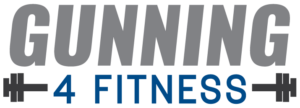LESSON 3 – Your Macros
How to choose the best macro numbers for you – Click Here
How you can update your macros in the app – Click Here
Understanding what macros are and what they do for the body – Click Here
Do I have to track macros to see fat loss? – Click Here
TO DO: Set up your customized calories and macros on your dashboard – Click Here to Setup Macros
Changing how we eat can feel like the biggest challenge when we want to transform our bodies, but don’t worry—I’m here to walk you through every step! I’ve created a series of videos in the Resources group to guide you through assessing your current habits, setting an action plan, and creating realistic expectations based on your current phase of life.
In this lesson, let’s focus on a key piece of the puzzle: how much you should be eating daily. We’ll break down calories and macros so you know exactly what they mean and how they work for you.
The main difference between calories and macros is that calories measure the energy content of food, while macros describe the types of food you’re eating and what they do for your body. Essentially, calories determine your body weight, while macros help shape your body composition—how your body looks in terms of muscle and fat.
When tracking calories, you’ll set a goal based on your age, height, weight, activity level, and goals. Macro counting, on the other hand, takes those total calories and splits them among three main macronutrients: protein, carbohydrates, and fats. (There’s also alcohol as a macronutrient if you choose to track it.) You’ll monitor how many grams of each macronutrient you eat per day.
Do you have to track macros? No.
Is it recommended to track calories for weight loss? Yes, and here’s why:
If you’ve gained weight, it’s a sign that you’ve been eating above your daily maintenance calories, putting you in a surplus, which is stored as body fat. Most of us aren’t sure just how far over maintenance we might be—that’s where tracking comes in.
For a few days, I encourage you to track what you’re eating so you can get an accurate picture of where you are.
Once you know where you stand, it can be helpful to track your calories and protein for a while. This monitoring allows you to adjust closer to your fat-loss target. It might seem time-consuming, but tracking can be a powerful tool in helping you reach your goals and truly understand what’s going into your body.



